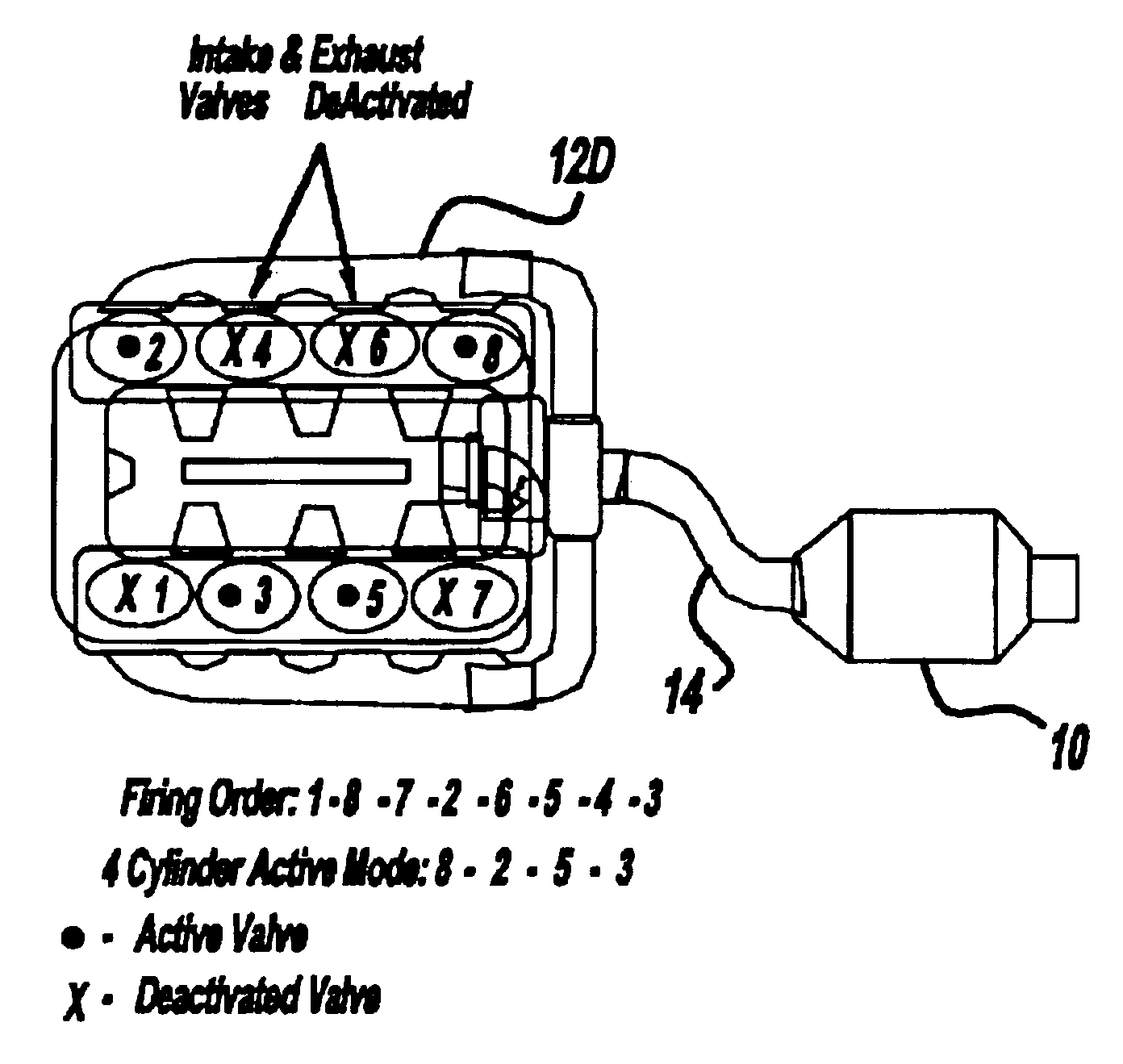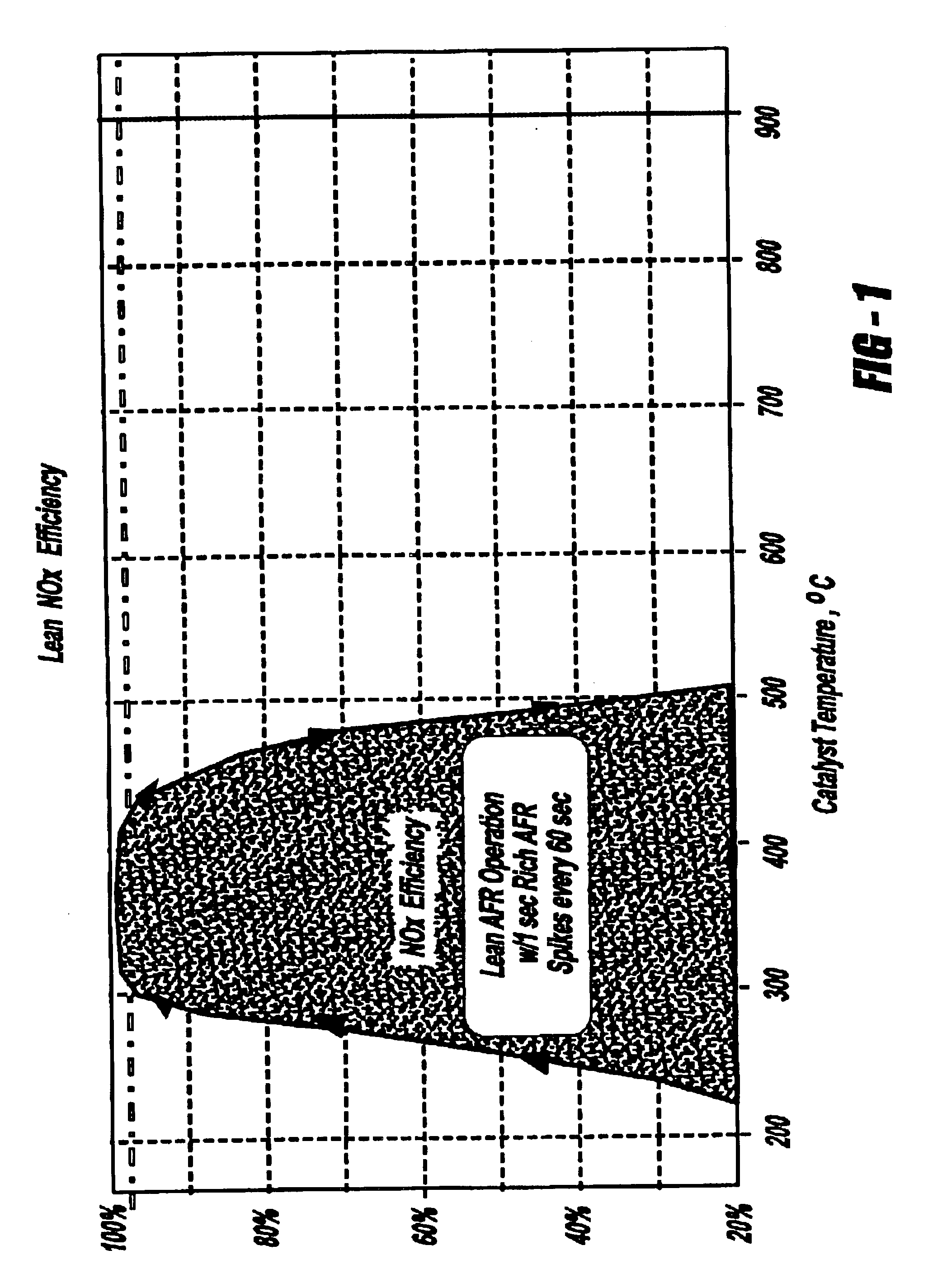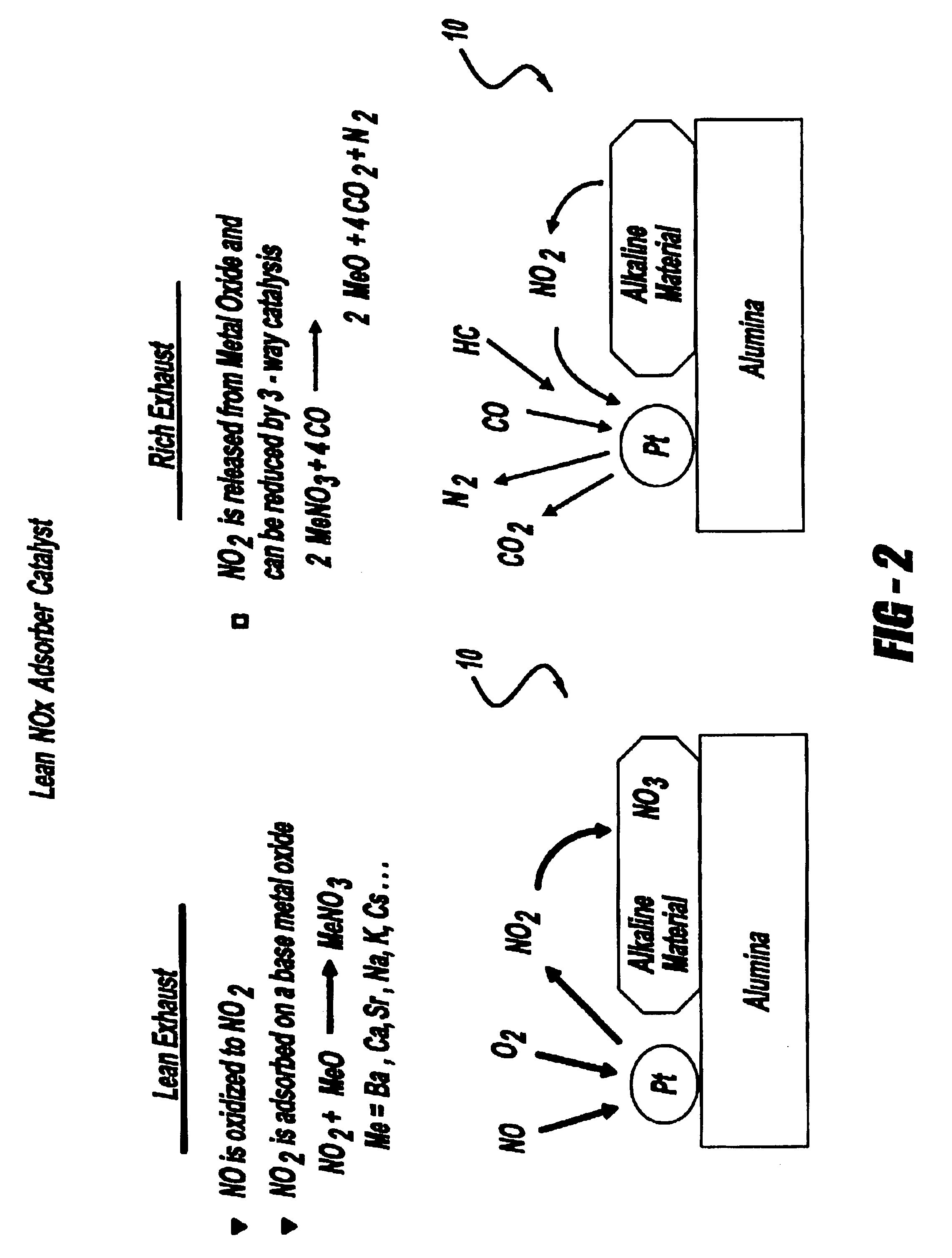Exhaust emission aftertreatment
- Summary
- Abstract
- Description
- Claims
- Application Information
AI Technical Summary
Benefits of technology
Problems solved by technology
Method used
Image
Examples
Embodiment Construction
FIG. 2 is a functional diagram of a NOx trap 10 utilizing metal oxides (MeO) as a trapping agent for NOx compounds during lean operating conditions and releasing NOx compounds during rich conditions. The reductant carbon monoxide and hydrocarbons in the relatively rich exhaust stream combine with the NOx and are converted to nitrogen and oxygen.
FIGS. 3A-3E include alternate variable displacement internal combustion engine (ICE) 12 configurations of the present invention. The ICE 12 is preferably a diesel engine but any ICE, including direct injection gasoline ICEs, is within the scope of the present invention. FIG. 3A is a diagrammatic drawing of a variable displacement six cylinder (ICE) 12A. The ICE 12A is coupled to exhaust manifolds 14 and dual NOx traps 10. Any cylinder in the ICE 12A may be deactivated but in the preferred embodiment an entire bank of cylinders (contiguous cylinders) is deactivated during the ICE 12A operation. FIG. 3B, similar to FIG. 3A, is a diagrammatic dr...
PUM
 Login to View More
Login to View More Abstract
Description
Claims
Application Information
 Login to View More
Login to View More - R&D
- Intellectual Property
- Life Sciences
- Materials
- Tech Scout
- Unparalleled Data Quality
- Higher Quality Content
- 60% Fewer Hallucinations
Browse by: Latest US Patents, China's latest patents, Technical Efficacy Thesaurus, Application Domain, Technology Topic, Popular Technical Reports.
© 2025 PatSnap. All rights reserved.Legal|Privacy policy|Modern Slavery Act Transparency Statement|Sitemap|About US| Contact US: help@patsnap.com



